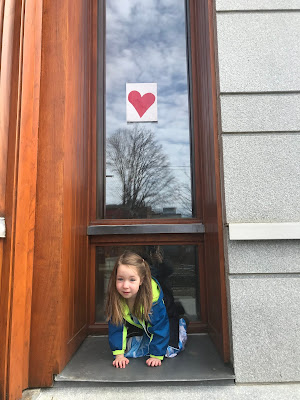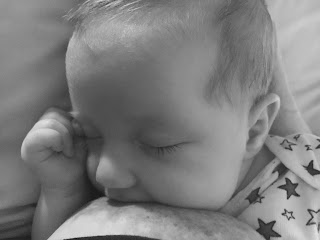“Life
affirms life. Plant your gardens. Make your art.” –Rose Chessman (1964-2004)
I don’t know where
this phrase originated, “
the art of motherhood,”
but we see it in magazine ads, in books, in stores or doctor’s office posters,
as if a fancy, loaded, upscale word, “art,” attached to motherhood will pacify
us. Like we won’t see the reality of the mundane: the diapers, the tantrums,
the lonely, frustrating world of motherhood because, they tell us, it’s an art.
Our art. Yeah right. Here is why I do not believe motherhood is an art
(although I wish I did because I’d like to be an artist, and also
this artist mom is pretty rad at showing her
art of motherhood).
I read a book
called
Art & Fear: Observations on the Perils (and Rewards) of Artmaking, by Davie Bayles and Ted Orland. According to these art
critics, to call something art, it must include self-expression. Does this
sound like motherhood to you? Is motherhood a form of self-expression? More
like a form of self
less-expression! I’ve never once—not while changing a
horrendous blow-out diaper, or rushing to have dinner ready before my toddler
explodes in a hunger tantrum, or nursing all night, every night—stopped and
thought,
gee, I’m really expressing
myself here. Granted, I have used motherhood a great deal as a theme in my
art and poetry, but I would not go as far as to say that the
act of
motherhood in itself is an art. Mothers still need our own creative outlets.
Yes, giving birth is a major act of creativity, and motherhood can propel us
into creative endeavors, but if we want to make art, we should paint, write
poems, sculpt, blow hot glass—any medium will do. Motherhood is not an artist’s medium.
If we must use a
creative metaphor for motherhood, why not call it a
craft? According to Bayles
and Orland, craft is doing a technique with an attainable goal of perfection;
doing it over and over, repeatedly, in hopes of producing the perfect piece.
Now, I know and you know there is no such thing as the perfect mother. But our
culture still
promotes this myth. If only we would just get it right, no one
would end up on drugs, or commit crimes or suicide. We have
hordes of books and
experts telling us how to do it right. Even the experts on
attachment parenting, the follow-your-instinct crowd, tell us if we do it that way we, and
our kids, will be perfect. No matter what parenting theory you subscribe to,
it’s all the same message: do things right, and everything, and everyone, will
be right. And even though we know this to be false, we still work toward it. I
want my child to grow up to be secure, well-adjusted, happy, healthy, loving,
empathetic, socially conscious, and smart. In short, almost perfect. Who
doesn’t want this for her child? So I breastfeed, I
baby-wear, I feed him
nutritious, organic food, I use
cloth diapers, and so on in search of
perfection, even though I know it is a myth. Over and over, day in and day out,
I do the work of mothering, secretly wishing for perfection.
Here’s my
conclusion: On days I want art, I make a collage, write and read poetry; on
days I crave perfection, I make, and devour,
The Best Chocolate Cake.
Cake
2 ½ cups unbleached white flour
1 ½ cups sugar (I use a little
less)
½ cup cocoa
1 ½ teaspoons baking soda
¾ teaspoon salt
1 ½ cups warm water
½ cup vegetable oil
1 ½ teaspoons vanilla extract
1 ½ teaspoons white vinegar
Icing
1 cup semisweet chocolate chips
8 Tblsp. (1 stick) unsalted
butter, softened
1 large egg
1. Preheat oven
to 350ºF. Butter and flour two, 8-inch layer pans and set aside. Thoroughly
combine the flour, sugar, cocoa, baking soda, and salt in a bowl.
2. Pour in the
water, oil, vanilla, and vinegar and stir until combined. Pour into the prepared
pans. Bake 30 minutes, or until a knife inserted in the center comes out clean.
Cool on a rack 10 minutes, then remove cakes from pans and cool completely. (For
a quick,
vegan treat, I usually stop right here and omit the frosting. It’s
done in no time, and tastes amazing when warm!)
3. Buttercream
frosting: melt the chocolate in a double boiler, then remove the top pan. Let
the chocolate cool until tepid. In a medium bowl, cream the butter, using an
electric mixer. Add the egg and beat until blended, but not smooth. Pour in the
chocolate and beat until just combined.
4. When the cake
is completely cool, spread some icing on one layer. Top with the other layer,
then spread the remaining icing all over the cake. Chill the cake at least 30
minutes, then bring to room temperature before serving.
Babies are not
paintings—works of art mothers create from air, imagination, canvas and
brushes. Babies are not cakes that we mix and measure in perfect union of key
ingredients. Babies are people, and people are far from perfect. Life is not
perfect. That chocolate cake? Go ahead. See for yourself. I have to go
self-express some toys off the floor.
 Safe as Lightning: Poems by Scudder H. Parker
Safe as Lightning: Poems by Scudder H. Parker


